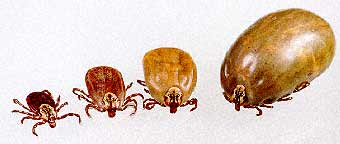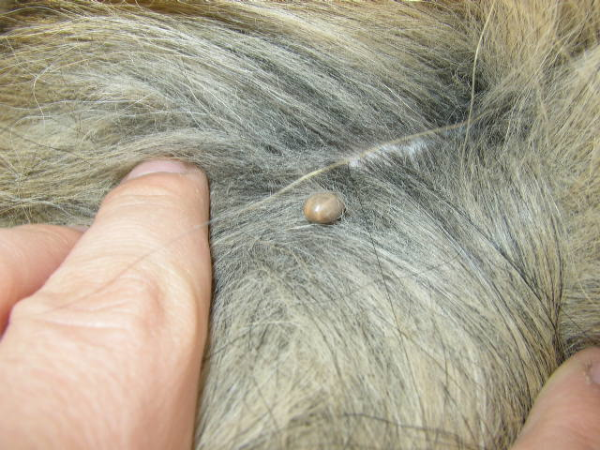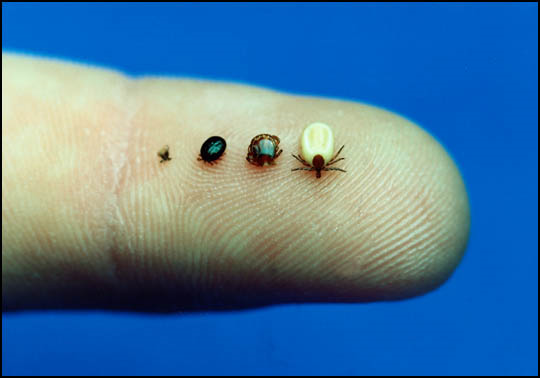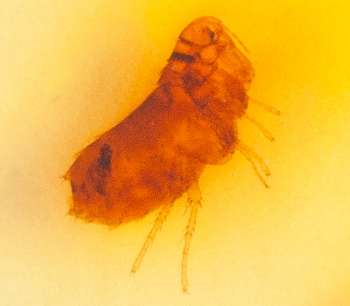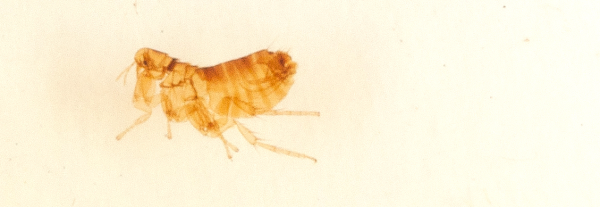FLEAS AND TICKS ARE MORE THAN A NUISANCE TO FAMILY PETS
Franklin Pest Solutions urges pet owners to take proactive steps to protect their animals.
Plenty of pests pose health risks to humans, but there are also those that can be dangerous for other beloved family members— pets. Franklin Pest Solutions, Northwest Indiana pest experts, warns that summer is prime season for ticks and fleas, which pose serious health risks to pets.
Dusty, our retired termite dog, is happy to be tick free!
Tick Control Indiana
Ticks are vectors of Lyme disease and Rocky Mountain spotted fever, which can be transmitted to humans, but they can also cause tick paralysis in dogs. This can cause muscle weakness, loss of coordination and even death if the chest muscles become paralyzed, causing respiratory failure.
Remember to check your furry “kids” before you let them back in your house every time to reduce the risk of spreading these harmful pests to other animals in your house or even your family members. They’re out in full swing and ready to bite. It’s strongly recommended that if your pets are not already on some preventative control for fleas and ticks, you get the medicine from your vet as soon as possible. It may be expensive medicine, but in the long run, you’d spend a lot more in trying to a control a spreading tick problem that preventing one.
Photo: www.findavet.us
How to properly remove a tick
The CDC recommends the following information on how to properly remove a tick.
- Use fine-tipped tweezers to grasp the tick as close to the skin’s surface as possible.
- Pull upward with steady, even pressure. Don’t twist or jerk the tick; this can cause the mouth-parts to break off and remain in the skin. If this happens, remove the mouth-parts with tweezers. If you are unable to remove the mouth easily with clean tweezers, leave it alone and let the skin heal.
- After removing the tick, thoroughly clean the bite area and your hands with rubbing alcohol, an iodine scrub, or soap and water.
- Avoid folklore remedies such as “painting” the tick with nail polish or petroleum jelly, or using heat to make the tick detach from the skin. Your goal is to remove the tick as quickly as possible–not waiting for it to detach.
Flea Control Indiana
Though often thought of as an itchy annoyance, fleas also pose a serious health threat to pets if left unchecked. Beyond the fact that fleas breed with lightning speed and quickly infest homes, fleas’ saliva can cause anemia, dermatitis and can transfer tapeworms.
Adult Flea. Photo: Ricky Kluge
Fleas are one of the more difficult pests to erradicate because of how rapidly they breed. Just when you think you might be done scratching, dormant eggs could hatch out months later and the problem resurges again. The following are some general tips about fleas:
- Fleas are teeny tiny flat insects, about 1/16″
- Reddish brown in color
- They live on the bodies of warm-blooded mammals
- Feed on blood
- Dogs and cats pick them up from being outdoors
- Eggs are often laid while the animal is sleeping, so pet resting spots are common zones for flea breeding
- Using bombs and over-the-counter pesticides often worsen the infestation, causing the fleas to scatter to wall voids and what not, where they will breed even more
- Eggs can lie dormant for months if they’re not activated, disturbed or hatched
- Wash floors, pet bedding and area rugs in hot soapy water to kill fleas and eggs that could have been laid there
Photo: Ricky Kluge
“Fleas and ticks are especially problematic in the warmer months. Time spent playing outside with pets or walking in the woods or in tall grassy can put pets at risk for picking up these pests,” said Wayne Magnuson, Branch Manager for Franklin Pest Solutions in Hammond IN. “It’s important for owners to carefully check their pets frequently throughout the season.”
How to Get Rid of Fleas and Ticks in the Yard
Insects like fleas and ticks are attracted to your yard for several reasons.
- They know they can find a food source (your dog or cat or even your children).
- They know they can thrive in certain overgrown vegetation or wooded areas.
One solution to get rid of the populations in your yard is to keep all lawns, bushes, trees and other vegetation trimmed thoroughly on a regular basis. Keeping the grass trimmed short will provide less harborage opportunities. Another thing that will help reduce the risk of infestation of these and other pests, like mosquitos is to eliminate any standing water on your property. That makes for intense insect breeding zones.
Beyond those tips, if you still are experiencing high volumes of these insects, you may want to consider having a treatment applied to the perimeter of your home by a pest professional to at the very least keep them from getting too close to your home. Lawn care professionals would be able to help with a broad turf application in between mowings if the infestations are really terrible. As always, think of your pets and family. Keep them protected with preventative medicine, like Frontline from your vet or insect repellant with DEET when the kids go outside to play.
TIPS FROM NPMA
The National Pest Management Association, a nonprofit organization committed to the protection of public health, food and property from household pests, offers these tips to help prevent fleas and ticks:
- Check pets frequently for fleas and flea dirt. Be aware of excessive scratching, licking and nibbling grooming behavior in pets Avoid walking in tall grass where there is a greater chance of encountering fleas and ticks
- Avoid tick habitats such as low-growing brushy vegetation along the edge of the woods or a trail
- Bathe pets after walks or playtime with other animals
- Wash pet bedding, collars and plush toys frequently
- Wash bed linens and vacuum carpets, floors and furniture frequently
- Empty vacuum bags in an outside receptacle
- Speak to a veterinarian about flea and tick prevention treatments
- If you suspect an infestation, contact a licensed pest professional immediately to treat the problem.
For more information or to speak with a pest a professional about your flea or tick issues, do not hesitate to contact us. A professional is just a call or click away!
| {{cta(‘3063c796-5c28-4b9e-a8e2-49cbfd054e64’)}} | {{cta(’03e7974a-bb7a-46b7-b0fd-0bf63c183240′)}} | {{cta(‘bf85df51-c6e7-4bdf-894c-e8a69b7ee917’)}} |


